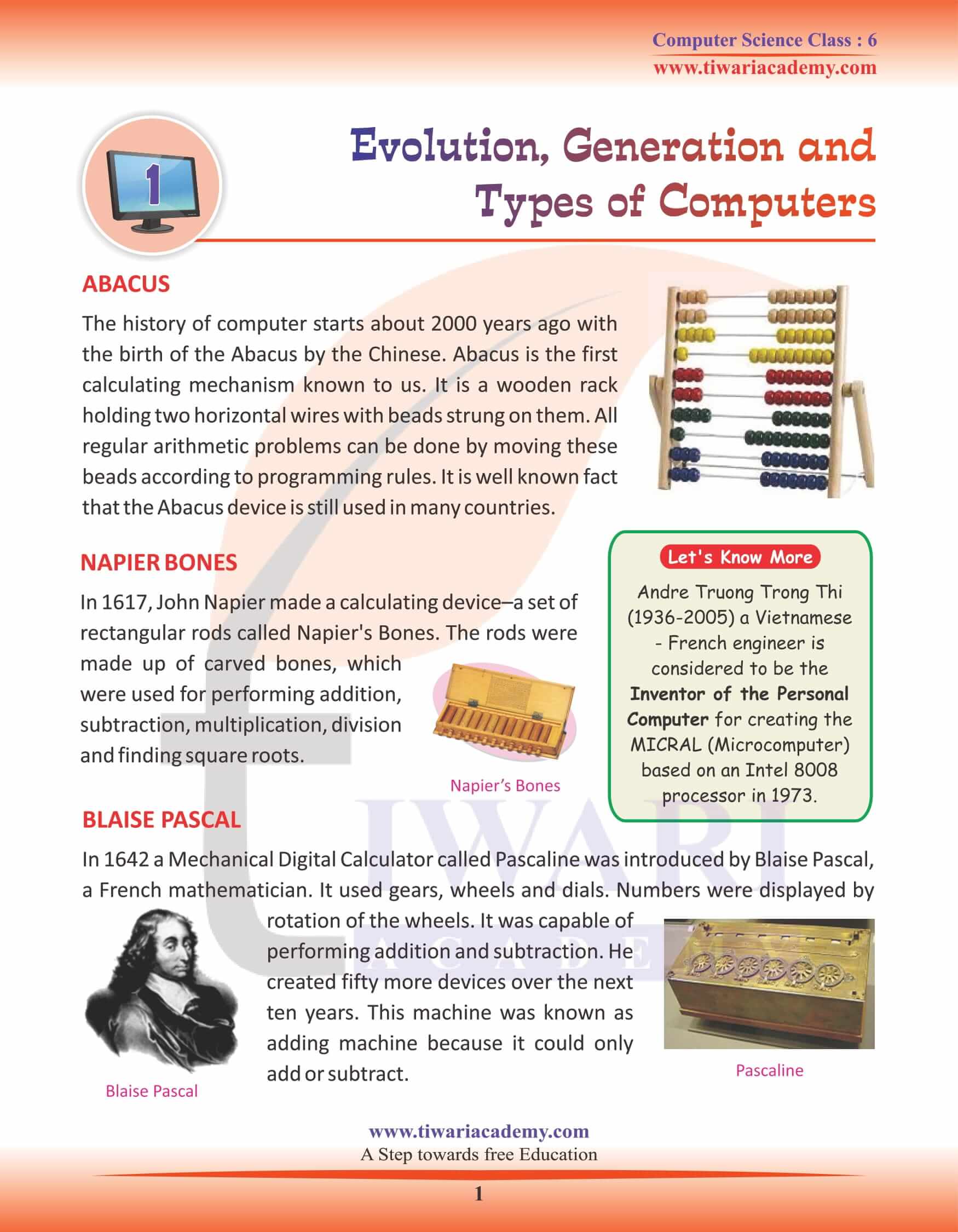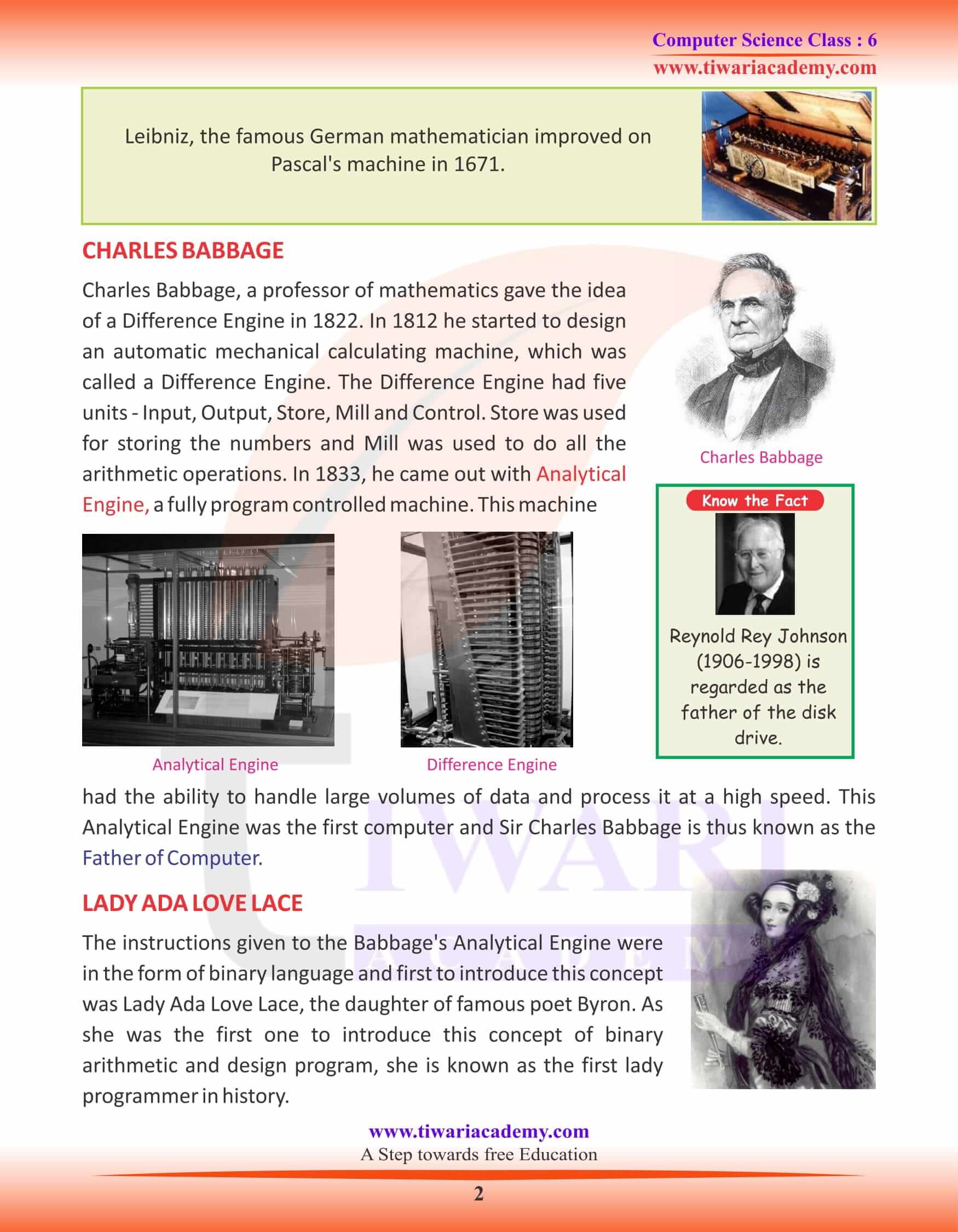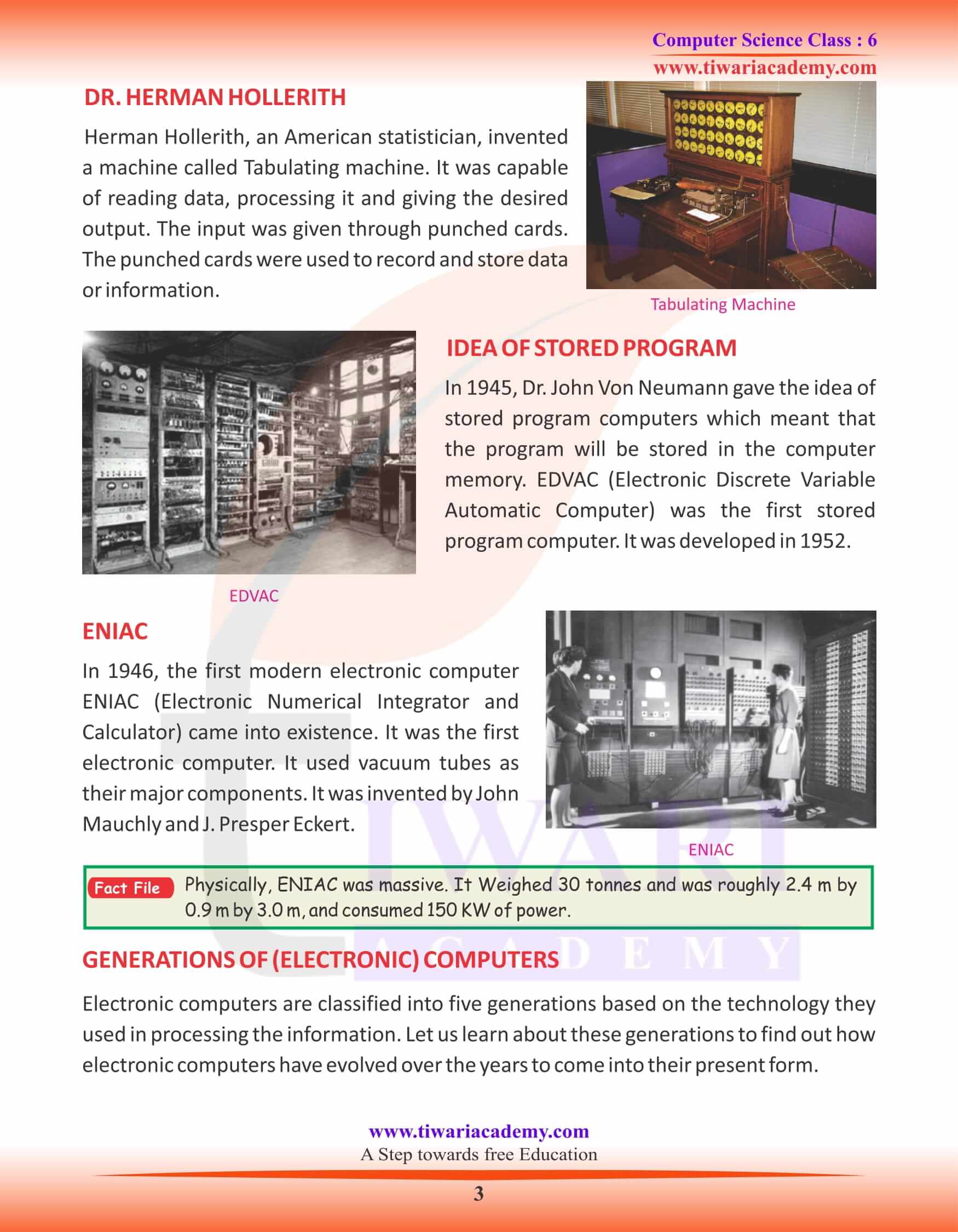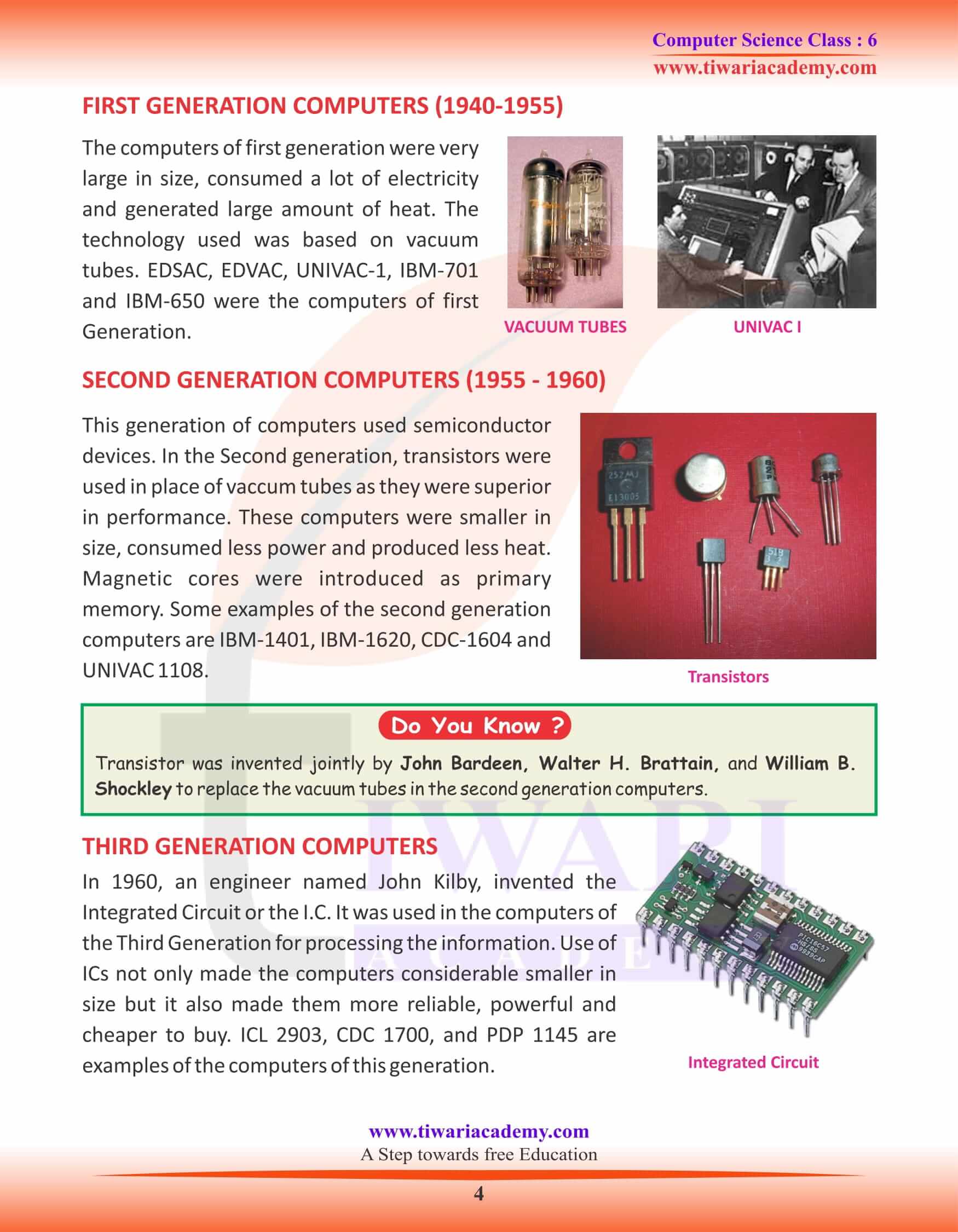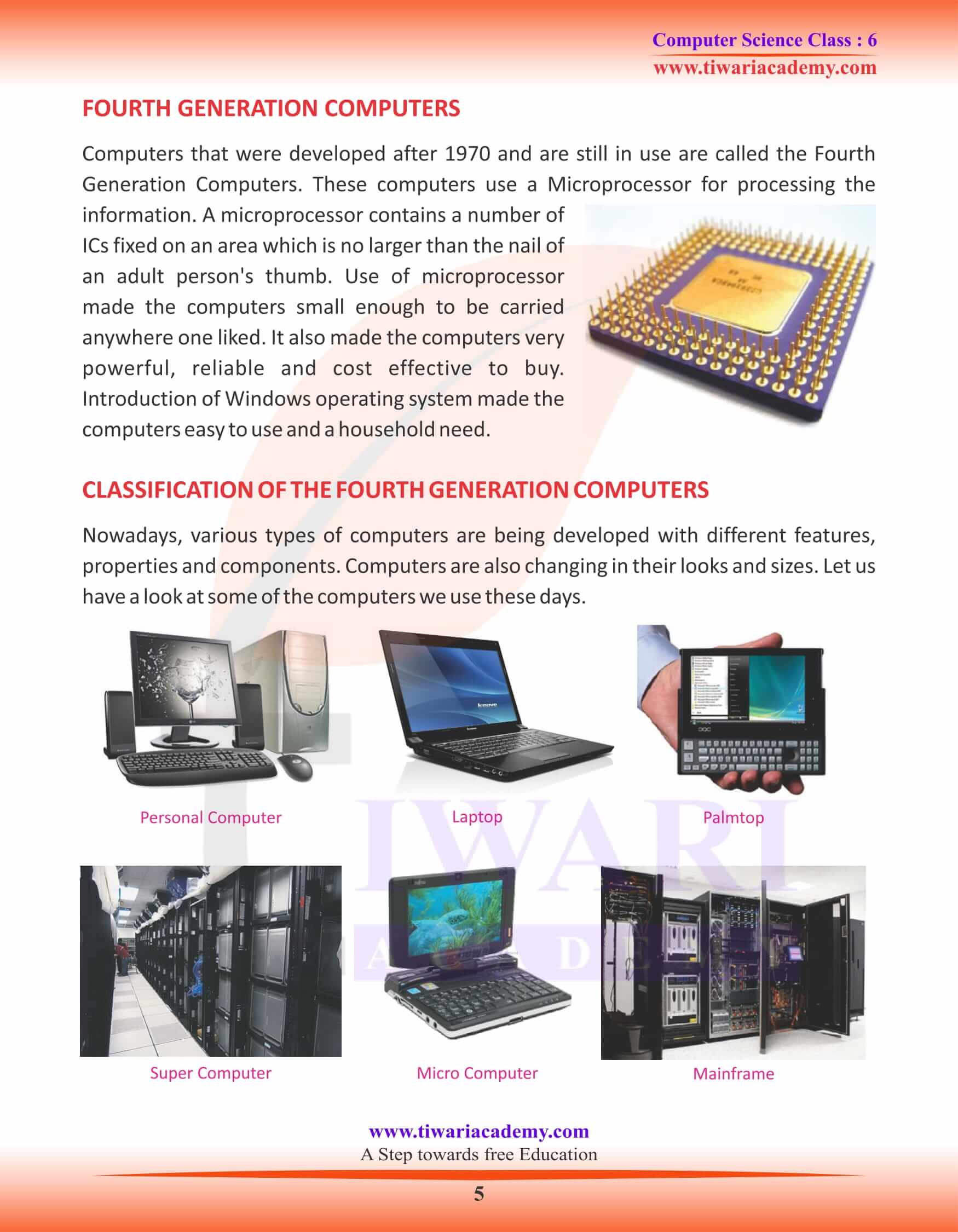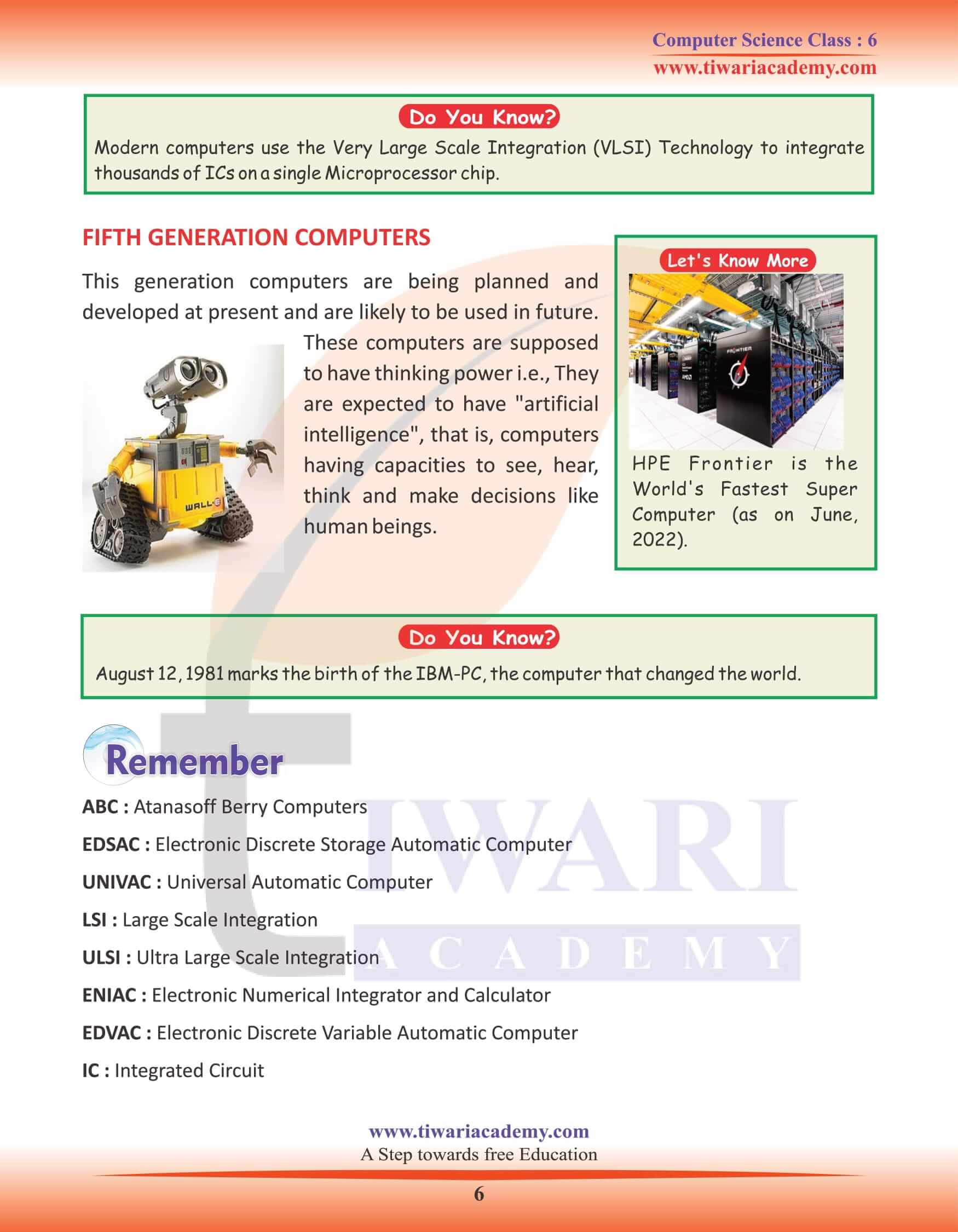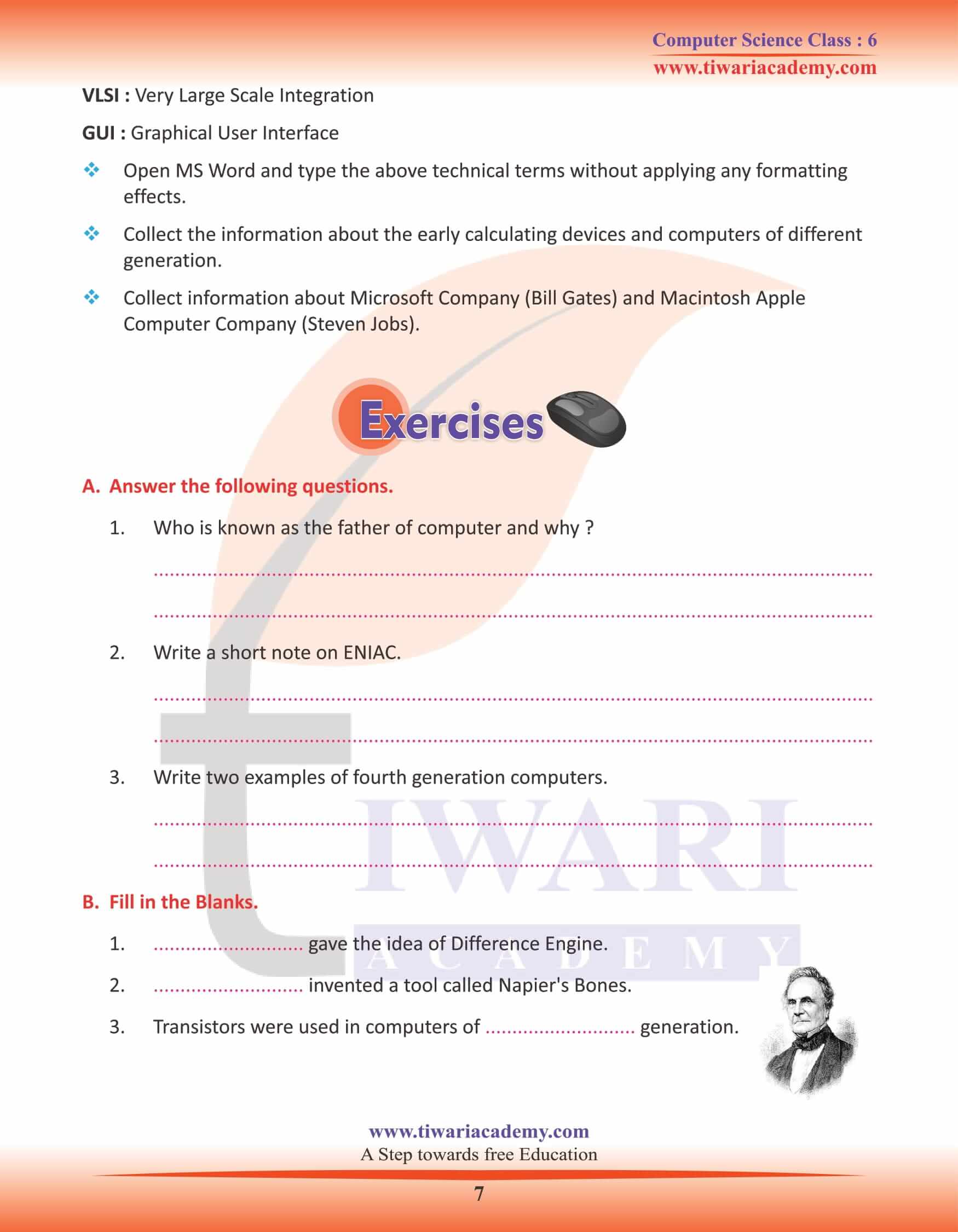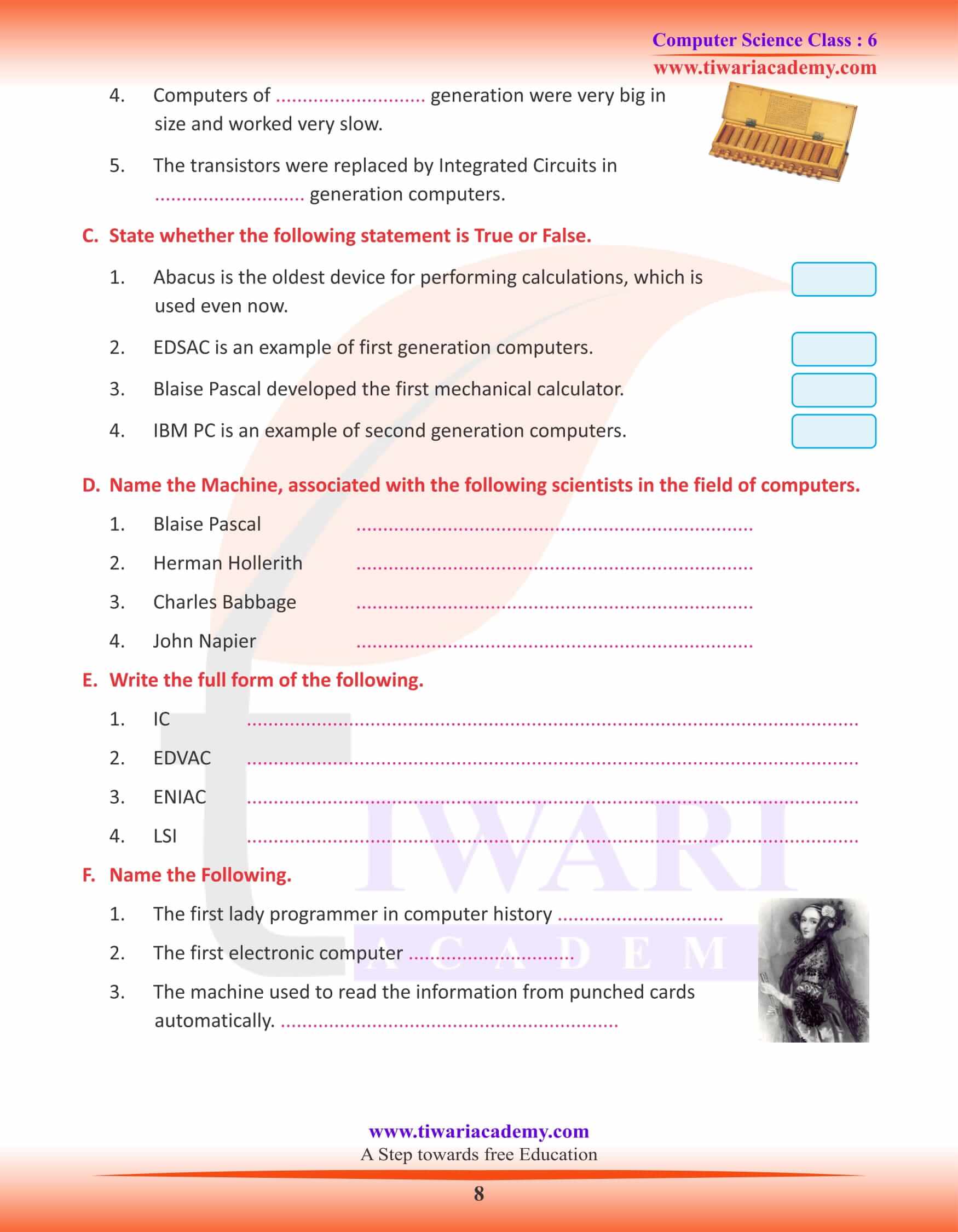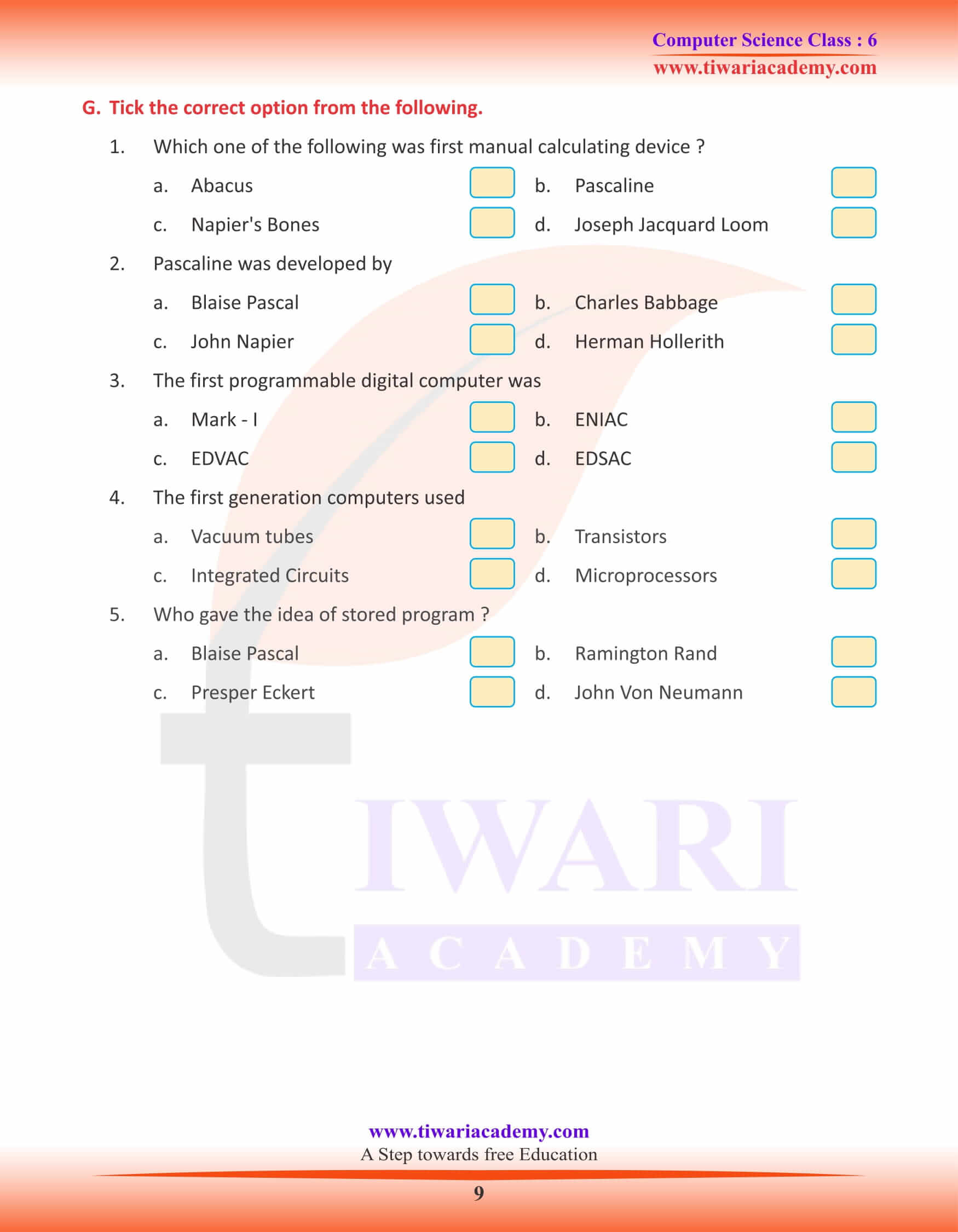NCERT Solutions for Class 6 Computer Science Chapter 1 Evolution, Generation and Types of Computer updated for CBSE and State board 2025-26. Grade 6 Computer book and notes of chapter 1 are useful for students to know the history of computer.
Class 6 Computer Science Chapter 1 Generation and Types of Computer
CHARLES BABBAGE
Charles Babbage, a professor of mathematics gave the idea of a Difference Engine in 1822. In 1812 he started to design an automatic mechanical calculating machine, which was called a Difference Engine. The Difference Engine had five for storing the numbers and Mill was used to do all the arithmetic operations. In 1833, he came out with Analytical Engine, a fully program controlled machine. This machine had the ability to handle large volumes of data and process it at a high speed. This Analytical Engine was the first computer and Sir Charles Babbage is thus known as the Father of Computer.
The instructions given to the Babbage’s Analytical Engine were in the form of binary language and first to introduce this concept was Lady Ada Love Lace, the daughter of famous poet Byron. As she was the first one to introduce this concept of binary arithmetic and design program, she is known as the first lady programmer in history.
IDEA OF STORED PROGRAM
In 1945, Dr. John Von Neumann gave the idea of stored program computers which meant that the program will be stored in the computer memory. EDVAC (Electronic Discrete Variable Automatic Computer) was the first stored program computer. It was developed in 1952.
ENIAC
In 1946, the first modern electronic computer ENIAC (Electronic Numerical Integrator and
Calculator) came into existence. It was the first electronic computer. It used vacuum tubes as their major components. It was invented by John Mauchly and J. Presper Eckert.
GENERATIONS OF (ELECTRONIC) COMPUTERS
Electronic computers are classified into five generations based on the technology they used in processing the information. Physically, ENIAC was massive. It Weighed 30 tonnes and was roughly 2.4 m by 0.9 m by 3.0 m, and consumed 150 KW of power.
VACUUM TUBES UNIVAC I
Transistor was invented jointly by John Bardeen, Walter H. Brattain, and William B.
Shockley to replace the vacuum tubes in the second generation computers.
The computers of first generation were very large in size, consumed a lot of electricity and generated large amount of heat. The technology used was based on vacuum tubes. EDSAC, EDVAC, UNIVAC-1, IBM-701 and IBM-650 were the computers of first Generation. This generation of computers used semiconductor devices. In the Second generation, transistors were used in place of vaccum tubes as they were superior in performance. These computers were smaller in size, consumed less power and produced less heat. Magnetic cores were introduced as primary memory. Some examples of the second generation computers are IBM-1401, IBM-1620, CDC-1604 and UNIVAC 1108.
SECOND GENERATION COMPUTERS (1955 – 1960)
FIRST GENERATION COMPUTERS (1940-1955)
THIRD GENERATION COMPUTERS
In 1960, an engineer named John Kilby, invented the Integrated Circuit or the I.C. It was used in the computers of the Third Generation for processing the information. Use of ICs not only made the computers considerable smaller in size but it also made them more reliable, powerful and cheaper to buy. ICL 2903, CDC 1700, and PDP 1145 are examples of the computers of this generation. Super Computer Micro Computer Mainframe Personal Computer Laptop Palmtop.
FOURTH GENERATION COMPUTERS
Computers that were developed after 1970 and are still in use are called the Fourth Generation Computers. These computers use a Microprocessor for processing the information. A microprocessor contains a number of ICs fixed on an area which is no larger than the nail of an adult person’s thumb. Use of microprocessor made the computers small enough to be carried anywhere one liked. It also made the computers very powerful, reliable and cost effective to buy. Introduction of Windows operating system made the computers easy to use and a household need.
CLASSIFICATION OF THE FOURTH GENERATION COMPUTERS
Nowadays, various types of computers are being developed with different features, properties and components. Computers are also changing in their looks and sizes. Let us have a look at some of the computers we use these days. Modern computers use the Very Large Scale Integration (VLSI) Technology to integrate thousands of ICs on a single Microprocessor chip.
- UNIVAC: Universal Automatic Computer
- LSI: Large Scale Integration
- ULSI: Ultra Large Scale Integration
- ENIAC: Electronic Numerical Integrator and Calculator
- EDVAC: Electronic Discrete Variable Automatic Computer
- IC: Integrated Circuit
- HPE Frontier is the World’s Fastest Super Computer (as on June, 2022).
FIFTH GENERATION COMPUTERS
This generation computers are being planned and developed at present and are likely to be used in future. These computers are supposed to have thinking power i.e., They are expected to have “artificial intelligence”, that is, computers having capacities to see, hear, think and make decisions like human beings.
